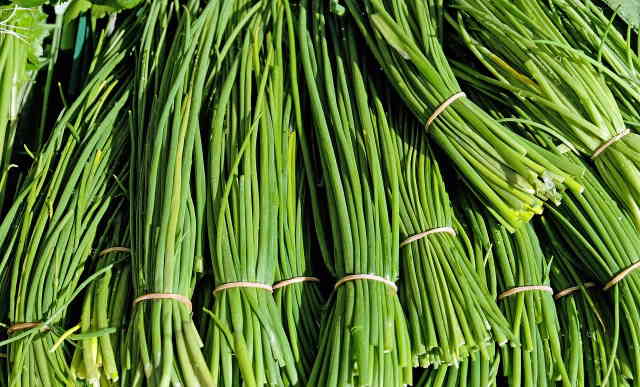Chives are hardy perennials and easy to grow even if you’re an amateur gardener. They’ll add attraction to your outdoor landscape, especially when the bright purple blooms come out in late spring. Other than their ornamental benefits, they also make a pleasing addition to soups and stir fries.
When you harvest them correctly and at the right time, the chives crop will continue to thrive and keep your kitchen loaded with freshly picked herbs through several seasons in a row. Continue reading and you’ll learn when to harvest chives and how to do so to avoid killing them.
Reader Poll: What online courses would interest you?

Why Harvest Chives?
Other than adding flavor and aroma to your dishes, harvesting chives, when done correctly, brings a host of benefits to the plant itself. Pruning the herb plant encourages new, tender shoots and keeps the plant growing vigorously.
Furthermore, since chives grow aggressively, their spread needs to be controlled. If not pruned regularly, they can quickly spread out from their allocated space and overcrowd the surrounding plants. Harvesting it regularly keeps the plant in shape and prevents it from taking over your garden.
When To Harvest Chives
There’s no fixed time to harvest chives, much like other herbs. You can start harvesting chives 30 days after transplanting nursery seedlings. However, make sure they’re at least 6 inches tall when you harvest them. When growing chives from seeds, you’ll have to wait longer to harvest chives. It typically takes two months for chives to reach maturity and come to harvest from the time you sow the seeds in the ground.
Subscribe to our newsletter!
You can harvest chives all through the spring and summer months, up till early winters. Chives go dormant during the cold weather but fresh, green growth will resume as soon as the warm weather of spring sets in, which is when you can start harvesting again as soon as the shoots are 6 inches tall. Gardeners living in warm climates can harvest it all year round.
Though you can harvest it almost all year round, the best time to harvest the crop is either just before or after it flowers. Harvesting around flowering time ensures most of the plant’s energy goes into developing new shoots instead of producing seeds. The flowers are as edible as the leaves and look great in fresh salads. If you want to consume chive flowers, harvest them while they are still young and tender. Once they turn brown, the blooms will turn tough and lose their appealing color.
Harvest early morning as soon as the dew dries on the leaves. This is the time when the most flavors and oils are concentrated in the leaves. Avoid harvesting during the hot afternoon hours since the flavors will be lowest at this time.
How Often To Harvest Chives
You know that you can start harvesting chives as soon as they’re 6 inches tall, throughout the summer season and well into the winter months. However, how often is it advised to harvest chives without risking the plants from going into stress? Will they regrow every time you harvest?
It’s quite natural to worry about harvesting herbs, particularly if you’re growing them for the first time. However, rest assured that chives are vigorous growers and it’s very less likely that you’ll kill the plant even if you harvest often.
Though chives are hardy plants, the first year of growth is a bit more critical than the subsequent years. During the first growing season, the plants are young and the plant focuses its energies on root development.
Frequent harvest during the first year will pull their energy from the roots and redirect it towards green growth. Weaker roots will directly impact plant development. To promote root development of the plant and healthier growth, harvest no more than two to three times during the first year of growth.
During the second growing season and later, you can harvest more often. In fact, regular harvesting keeps chives growing to their maximum potential.
How To Harvest Chives
Besides the right time to harvest chives, knowing how to harvest it is just as important to promote growth. Harvesting chives is very simple. Just hold a clump of 7 to 10 inches long leaves and cut them to the ground, 1 to 2 inches above soil level. Use sharp pruning shears or a sharp scissor to do the job. Avoid pulling out the leaves with your hand as it risks killing the plant. The flower stalks should be cut down at soil level so the plant won’t use its energies into going to seed.
Storage
Chives are best used fresh, you can also dry and store them for later. Dried chives are less flavorful than fresh ones. If you’ve harvested more chives that you have use for and want to keep the leftover herbs fresh for longer, just place their tips in a bowl filled with water and store in the fridge. You can continue using them fresh for the next couple of days. You can also store chopped leaves in the freezer to use them for moths, then again, the flavor diminishes
Conclusion
Growing chives is easy and a rewarding experience. If you’re not growing them already, it’s about time you add this fresh green and purple addition to your garden. It’s simple to harvest and when harvested properly at the right time, the crop will keep coming back every time you harvest for a consistent supply of fresh herbs to the kitchen.

